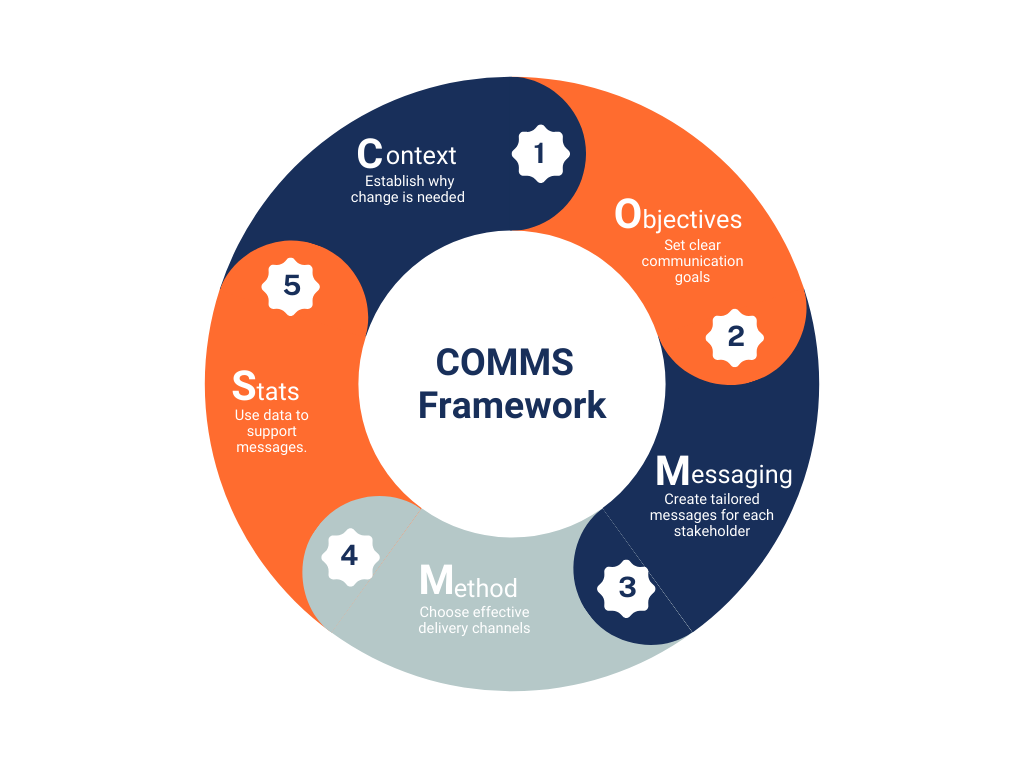COMMS Framework
Delivering communications that lands
What is the COMMS framework?
The COMMS framework is a structured approach to communication, specifically designed to support project teams during change and transformation initiatives. It ensures that all stakeholders are kept informed and engaged throughout the project lifecycle. This model emphasises clarity, relevance, and effectiveness in communications, crucial for the successful adoption of new systems and processes.
Benefits of using the COMMS framework
- Enhanced clarity and understanding: Ensures that all stakeholders understand the purpose and benefits of the change, reducing resistance and fostering support.
- Increased stakeholder engagement: Tailored messaging and appropriate communication channels increase stakeholder buy-in and participation.
- Better alignment and coordination: Keeps everyone on the same page, enhancing collaboration and coordination across teams.
- Data-driven decision making: Employs statistical evidence to support messages, enhancing credibility and the rational basis for the change.

Using the COMMS Framework
Description: The Context stage involves gathering detailed information about the project to understand the motivations and strategic objectives behind the change. This foundational knowledge equips the communications team to develop accurate and effective messaging.
What to Do: Engage with project leaders and review essential documents to gather detailed insights about the project's objectives and challenges. Summarise these findings in informational briefs that serve as the foundation for informed communication planning and strategy development, ensuring all messaging aligns with the project's underlying reasons and goals.
Description:
Define what the communication efforts aim to achieve, aligning with the overall project goals and specific stakeholder needs.
What to Do:
Establish clear, measurable communication objectives that support project aims, such as enhancing stakeholder understanding, promoting engagement, or facilitating smooth implementation.
Description: Develop clear, targeted messages that convey the value and purpose of the change to various stakeholders.
What to Do: Craft messages tailored to different audience segments, addressing their specific concerns and expectations. Ensure consistency across all communications to reinforce key points and project benefits.
Description: Select the most effective channels and tools to reach and engage stakeholders, considering their preferences and access.
What to Do: Choose appropriate communication methods such as emails, workshops, meetings, or digital platforms to ensure effective dissemination of messages. Plan the timing and frequency of communications to maximise impact.
Description:
Use data and statistics to strengthen the credibility of messages and illustrate the need and benefits of the change.
What to Do:
Incorporate relevant quantitative information, such as project metrics, benchmarks, or expected outcomes, to support and validate the communication content. Use visual aids like charts or infographics to make data more accessible and compelling.
